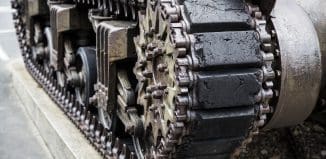U.S. Army Battle Lab Presents new UGV’s
This post is also available in:  עברית (Hebrew)
עברית (Hebrew)
The U.S. Army is testing a variety of unmanned ground vehicles to see how well they can fire weapons and carry the load for a nine-man squad. Three of the vehicles are designed solely to carry equipment and supplies, and the remaining seven are also capable of being fired remotely.

The AUGVs are designed to serve two purposes on the battlefield: Firstly to maneuver with small units, to close in on and destroy the enemy and secondly to conduct reconnaissance missions.
Lt. Col. Willie Smith, the battle lab’s chief of unmanned ground systems, was careful to say that the armed robots would not be “autonomous.” Autonomy is not the objective, he said, adding “there’s always a man in the loop. I know a lot of people have concerns about the ethical issues, the rules of engagement, because robots don’t have the capacity to determine ethically what should or should not be done,” Smith said.
According to Defense News, during the tests, the AUGV was called upon to engage targets from 800 meters away. They had to move to a firing point, fire and then leave the firing point. Safety was a key part of the test, which looked at how reliably the systems can be controlled at various distances.
iHLS – Israel Homeland Security
The tests also look at the effect on the platforms when they fire an M240, a belt-fed, gas-operated medium machine gun; and the degree that the size, weight and stability of the platform affects accuracy and distance.
Over the course of the event, the Army’s Squad Multipurpose Equipment Transport ( S-MET) program, was set to look at unmanned robotic platforms that can transport equipment and significantly lighten the soldier’s mission equipment load. It would also be required to charge soldiers’ batteries.
The S-MET may carry up to 1,000 pounds, the equivalent of the weight carried by a nine-man squad on a 72-hour mission. It must also maintain a 4 kilometer-per-hour march speed for eight hours with zero to 38 kph bursts of speed for 200 meters on a hard, dry and level surface.
The S-MET will also have to traverse in forward and reverse on slopes of up to 30 percent and descending on slopes of 60 percent.






























